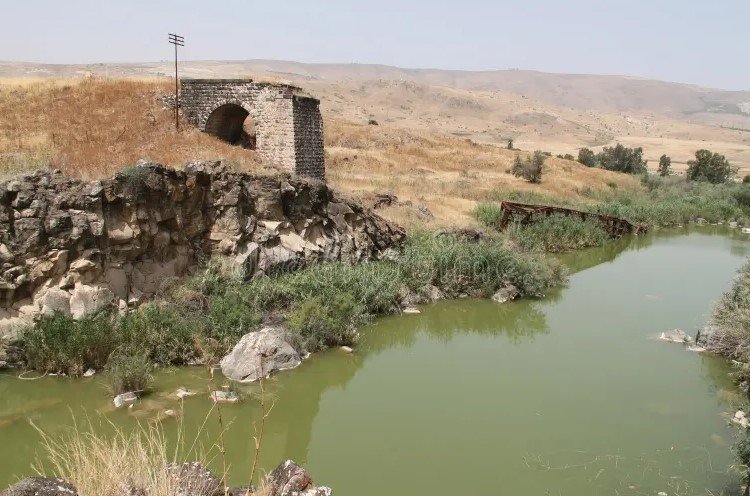Syria and Jordan have resumed high-level discussions in Damascus aimed at managing the Yarmouk River Basin more cooperatively, with both sides pushing for practical water-sharing arrangements as climate pressures mount in the region.
Officials from both countries are backing a new technical committee to conduct detailed studies on how to sustainably tap shared water resources—an effort that could shape future development, agriculture, and water security in the border region.
Quiet Diplomacy Returns as Water Becomes a Priority
The Middle East doesn’t often get praised for quiet cooperation, but that’s exactly what’s unfolding between Syria and Jordan.
For the second time in two months, officials from both countries met to hammer out a framework for managing the Yarmouk River Basin, a waterway that’s been both a lifeline and a source of friction over the decades.
This week’s meeting took place in Damascus, following up on the first round held in Amman just last month. And while there were no dramatic breakthroughs, officials say the tone was productive, and—importantly—constructive.
One Syrian official called it “a rare example of neighbors trying to fix a problem before it becomes a crisis.”
What’s at Stake: A Shrinking River and Growing Needs
The Yarmouk River isn’t what it used to be. Years of drought, upstream diversions, population growth, and agricultural expansion have all reduced its flow.
At the same time, both Syria and Jordan face growing water insecurity. Jordan, among the world’s most water-poor countries, relies heavily on the Yarmouk to replenish its dams, including the key King Abdullah Canal. Syria, recovering from over a decade of conflict, is seeking more predictable access to its own share of the water.

Just one sentence here.
Officials acknowledged that finding a balance won’t be easy—but also that doing nothing could trigger bigger problems down the line.
Both Sides Agree: It’s Time for Action, Not Just Talk
Chaired by Osama Abu Zeid from Syria’s Ministry of Energy for Water Resources and Hisham Al-Haisa from Jordan’s Valley Authority, the meeting focused on concrete steps.
Three key points stood out from the session:
-
A joint technical committee will be formed immediately to oversee a full basin study.
-
Both countries agreed to share hydrological data more transparently going forward.
-
Investment opportunities—especially around joint agricultural or irrigation projects—will be explored.
That last point got particular attention. Jordanian officials reportedly floated the idea of building a jointly managed irrigation system that could benefit border communities on both sides.
For Syria, such a project could help revive abandoned farmland and improve food security. For Jordan, it’s about survival.
Water Security Now Framed as a Shared Issue
Water has always been political in this region. But the shift in tone this time? It’s subtle but significant.
Instead of arguing about who took what from where, both sides now seem more focused on how to build something together.
In recent years, the concept of “shared water security” has gained traction internationally, and this meeting echoed that language. Syrian delegates spoke of “equity and sustainability.” Jordan’s team stressed the importance of “institutional continuity and resilience.”
It may sound like diplomatic jargon. But behind those words is a recognition: climate stress is now a regional threat, and cooperation might be cheaper than conflict.
One-sentence paragraph.
This isn’t the first time the Yarmouk Basin sparked international interest either. The river has long been monitored by groups like the UN Economic and Social Commission for Western Asia (ESCWA), which warned in 2023 that the basin could become a “flashpoint” if regional cooperation stalls.
A River With a Complicated History
The Yarmouk has carved its way through politics as much as through rock and soil.
Historically, agreements between Syria and Jordan on river use have been patchy. The most notable treaty dates back to 1987, but critics say it’s outdated and poorly enforced. Over the past decade, border tensions and civil war interrupted formal cooperation altogether.
So this latest effort marks something of a reset.
One Jordanian analyst, speaking off the record, said: “It’s a chance to clear the pipes—literally and diplomatically.”
And unlike oil or gas, water deals are harder to fake. Rainfall doesn’t care about politics.
What Comes Next?
It’s too early to say whether this recent momentum will translate into lasting change. But both sides seem eager to avoid the fate of other regional disputes that dragged on for decades without resolution.
What we know for sure:
-
The technical committee will begin work in the next 30 days.
-
The next meeting has already been penciled in—expected to take place in Irbid or Daraa in late September.
-
External observers, possibly from international water bodies, may be invited to future sessions.
There’s even early chatter about an “equity-based water-sharing protocol” to be drafted by year-end. That would be ambitious—but not impossible.
One brief sentence again.
For now, both countries appear to be walking, not running. But at least they’re walking in the same direction.
